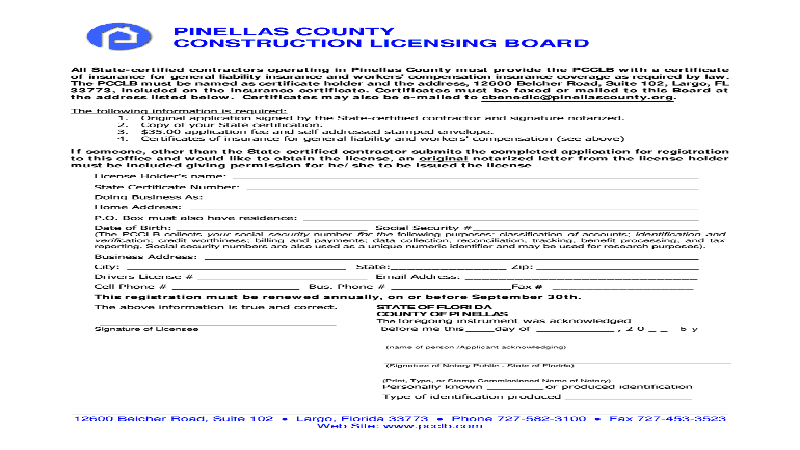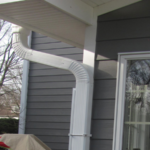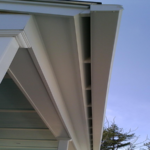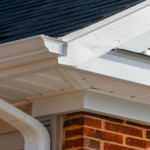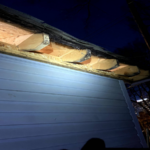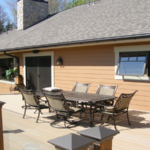- As a homeowner, you take great pride in the way your home looks and feels. But over time, your home’s gutters can become worn and damaged, affecting both its appearance and its ability to protect your home from the elements. That’s why it’s important to keep your gutters in good condition with regular gutter installation and maintenance.
- Gutters play a vital role in protecting your home from water damage. They channel rainwater and melting snow away from your home’s foundation, preventing it from seeping in and causing cracks or other damage. Gutters also help prevent water from pooling around your home, which can lead to flooding or other problems.
- While you can install gutters yourself, it’s generally best to leave this job to the professionals. Gutter installation can be tricky, and it’s important to make sure the gutters are installed properly in order to ensure they work properly.
- There are a variety of different materials to choose from when it comes to gutters, so it’s important to pick the right one for your home. Aluminum gutters are a popular choice because they’re lightweight and easy to install, but they can be prone to denting and may need to be replaced more frequently than other types of gutters.
What are some common mistakes that people make when installing gutters?
- Not securing gutters properly to the home. Gutters should be secured with hangers that are bolted to the fascia board, and they should be spaced no more than 24 inches apart.
- Not installing gutter guards. Gutter guards help keep leaves and debris from clogging gutters, and they can save a lot of time and hassle in the long run.
- Not cleaning gutters regularly. Gutters should be cleaned at least once a year to prevent build-up and ensure proper drainage.
- Not repairing gutters promptly. Gutters should be repaired as soon as any damage is noticed to prevent further damage and expense.
Are gutters worth the money?
There are a few things to consider when making the decision of whether or not to install gutters on your home. The first is the climate. If you live in an area with a lot of rainfall, gutters can help to protect your home from water damage by directing the rainwater away from the foundation. They can also help to prevent flooding in your basement or crawlspace.
Another consideration is the type of roof you have. If your roof is sloped, gutters can help to prevent water from pooling on the roof and causing leaks. They can also help to protect your roof from the weight of the water, which can cause the shingles to lift and eventually lead to leaks.
Finally, you need to consider the cost of installation and maintenance. Gutters can be a fairly expensive home improvement, but they can also last for many years with proper care. If you are considering gutters for your home, be sure to get multiple estimates to ensure you are getting the best value for your money.
How much are the best gutters?
There is no definitive answer to this question as the cost of gutters varies depending on a number of factors, such as the quality of the gutters, the size and style of the gutters, and the installation costs. However, as a general guide, the best gutters on the market typically cost between $20 and $40 per linear foot, depending on the aforementioned factors.
What should you not do when installing gutters?
• Don’t use too much sealant – This will make the gutters difficult to clean and can cause leaks.
• Don’t overtighten the screws – This can strip the threads and make the gutters difficult to remove.
• Don’t use the wrong size gutters – This can cause water to overflow and cause damage to your home.
How do you tell if gutters are installed correctly?
- Make sure the gutters are level. This is important because if they’re not level, water won’t drain properly and could potentially cause damage to your home.
- Check to see that the gutters are properly secured to the house. This is important because if they’re not, they could come loose during a storm and cause damage to your home or even hurt someone.
- Make sure the gutters are the right size for your home. This is important because if they’re too small, they won’t be able to handle the amount of water coming off your roof and could overflow.
- Check to see that the gutters are free of debris. This is important because if they’re not, the water won’t be able to flow through them properly and could cause damage to your home.
- Have a professional come and check your gutters at least once a year. This is important because they can spot any potential problems and fix them before they cause any damage.
Should gutters be nailed or screwed in?
There is no definitive answer to this question as it depends on a variety of factors, such as the type of gutter, the material of the gutter, the size of the gutter, and the climate. However, in general, it is advisable to screw gutters in rather than nail them in. This is because screws create a stronger connection than nails and are less likely to come loose over time. In addition, screws are less likely to damage the gutters than nails.
Should there be a gap between roof and gutter?
There are a few reasons why you might want to have a gap between your roof and your gutter. The most common reason is to prevent water from seeping into your home. If your gutters are not properly installed, water can seep into your home through the gaps between the roof and the gutter. This can cause serious damage to your home, so it is important to make sure that your gutters are installed properly.
Another reason to have a gap between your roof and your gutter is to prevent leaves and other debris from clogging your gutters. If there is no gap, leaves and other debris can fall into your gutters and cause them to become clogged. This can lead to water damage to your home and can also cause your gutters to collapse.
So, should there be a gap between your roof and your gutter? It depends on your specific situation. If you are concerned about water damage to your home, it is important to make sure that your gutters are installed properly. If you are concerned about leaves and other debris clogging your gutters, you may want to consider having a gap between your roof and your gutter.
Should gutters be flush with fascia?
There are a few reasons for this, the first being that when it rains, the water will run off of the roof and hit the gutters at an angle. This can cause the gutters to become dislodged and fall off, which is a hazard to anyone walking or standing below them. The second reason is that if the gutters are not flush with the fascia, the water can run behind the gutters and cause the fascia to rot.
Final Word
If you’re looking for a way to improve your home’s look and feel, gutter installation in Ann Arbor is a great option. Not only will it help protect your home from water damage, but it will also add to its curb appeal. Contact a local gutter installer today to get started.
